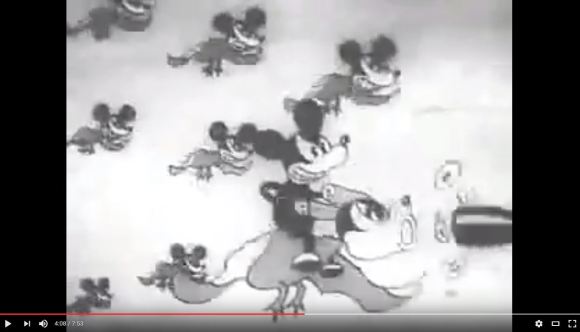
Japan may have forgiven the rip-off Disney star, but they have not forgotten what he did 80 years ago on that blood soaked Pacific island beach.
The year is 1936. The first edition of a new novel called Gone with the Wind was released just as African-American runner Jesse Owens dominated at the Berlin Olympics bemusing his host Adolf Hitler. Also, a baby by the name of Dennis Hopper was born, destined to go on to greatness as the true star of Texas Chainsaw Massacre 2, by far the best in the series.
But in Japan a historical battle had taken place. Often overlooked in other countries, it was a battle that rocked the nation to its very core. Waves of pain and regret rippled through the generations and can still be felt today in the hearts of Japanese people.
I’m talking about the 1936 “Mickey Mouse” bombing raids of a Japanese island in the Pacific Ocean. Thanks to this preserved archival footage of the incident we can all know what it was like so hopefully atrocities like that may never be committed again.
It was a fine day on the island on which Felix the Cat had been invited for a dance party on the beach.
Then out of the blue, Mickey Mouse (or at least a character that looks an awful lot like him) flew in on a really big bat and dropped a message for the residents there.
▼ “Vacate the island”
Felix the Cat unilaterally decides the fate of the island by setting the message on fire…and right up Mickey’s butt. Historians to this day debate whether that was the prudent move.
Mickey then called in battalions of snakes, fleets of alligators, and squadrons of bats to take the island by force…or liberate it, depending whether you’re a fan of Disney or not.
The survivors of the initial strike called upon Japan’s greatest fairy tale heroes to strike back at Mickey’s sizable army. Legendary characters Momotaro, Kintaro, Yoshitsune, Benkei and Issun-boshi all answered the call.
Naval forces were led by Urashima Taro, a young man who vanished to the castle of the dragon god for 300 years but did not age. He unfurls a quote from Marshal-Admiral Heihachiro Togo saying “The Empire’s Fate Depends on this Battle.”
After a fierce dog fight between Mickey’s bats and Momotaro’s dragonflies, the two commanders fight it out man-to-man on top of a cloud.
In the end Mickey is bested by Momotaro, and after falling through the cloud and getting hit by lightning half a dozen times, he is turned into an old mouse by the box containing Urashima Taro’s old age (it makes a lot more sense if you’ve read the fairy tale).
Finally, the fairy-tale characters ask Hanasaka Jiji to restore flowers to the island, and the celebration resumes. Only this time they are rejoicing over their victory against Mickey Mouse.
The description on the video’s YouTube page lists it as a “propaganda” piece. However, I don’t think it is quite meant to be one, despite the militaristic themes which were prevalent in Japanese society at that time. Called Toybox Series Part 3: Picture Book 1936 and produced by J.O. Studio and directed by Yoshitsugu Tanaka, it’s kind of like an Avengers of its time with all of Japanese folk-lore heroes coming together.
The villain in the short appears to be Mickey Mouse, but the look is almost certainly coincidental and just a stock rat character. With Japanese animation in its infancy it obviously borrowed heavily from its American counterpart in terms of style, much like China is doing now with Japan. How else would you explain why Felix the Cat sided with Japan?
I actually do have a detailed conspiracy theory that Felix was likely a double agent spy for the Japanese government in exchange for being transformed into the immortal cybernetic cat Doraemon…but that will have to wait for another day.
▼ The more you learn about these two, the more it makes sense…
Since that isn’t really Mickey Mouse, Toybox Series Part 3 doesn’t seem to be intentionally directed at a foreign enemy. I would say its more likely in reference to the previous wars against Russia and China than an attempt to vilify the USA through Mickey Mouse seven years before Pearl Harbor took place.
However!
There is one mystery about this short that I just can’t figure out. Toybox Series Part 3 was released in 1934, and yet the title and story refer to 1936. “Mickey” even breaks several laws of physics and biology to point out what year it is in the very beginning.
Why on earth would they set this story two years in the future? Perhaps it was scheduled to be released then, but if that were the case, then why mention the year at all. Also, there was no sci-fi element as far as I could see that would require a futuristic setting, unless Japan was expecting bat-jet technology to explode in the next two years.
Was the reference to 1936 significant? Or was it just a loose end that was never tied up by the makers of Toybox Series Part 3: Picture Book 1936 and yet inexplicably put in the title? Whatever the truth is may have died with its creators and left a mystery forever…
Source/images: YouTube/Canal de MitsukoWhiteWolf

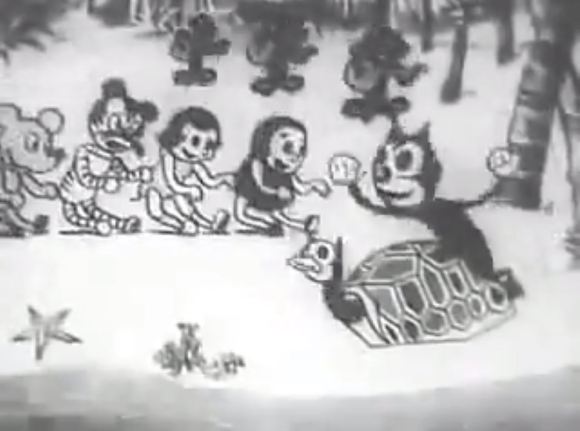
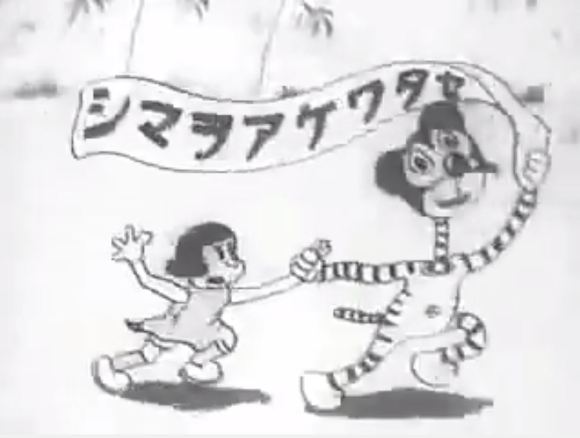
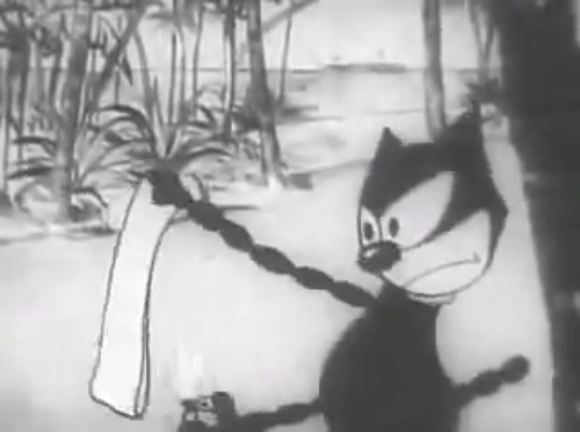

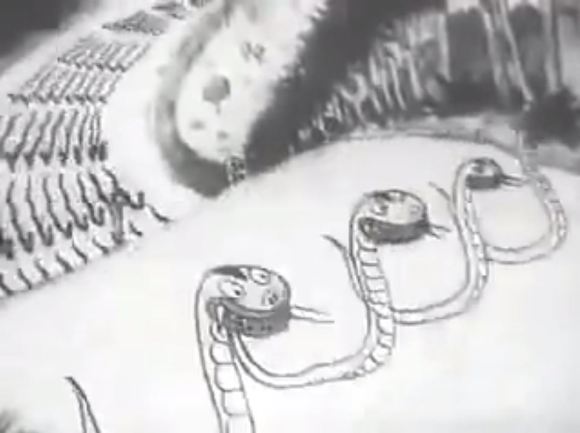
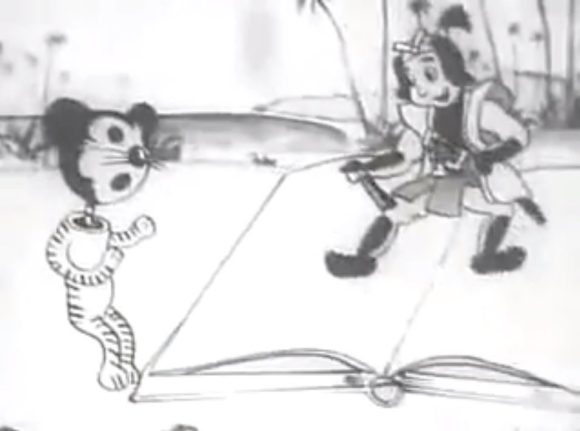
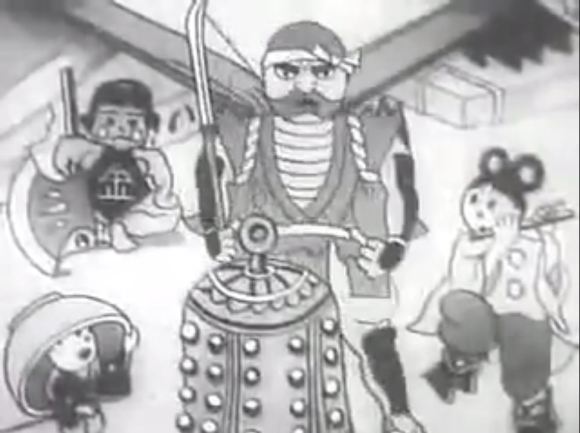
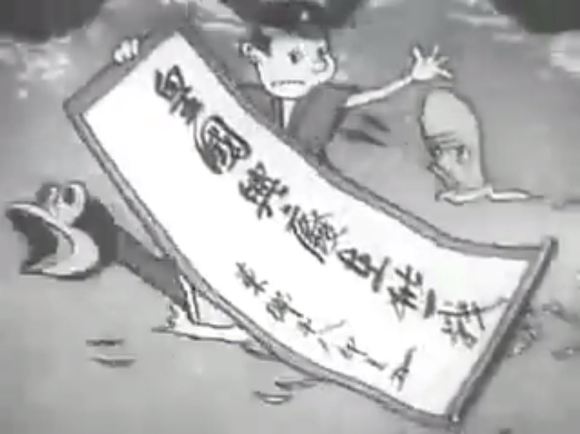
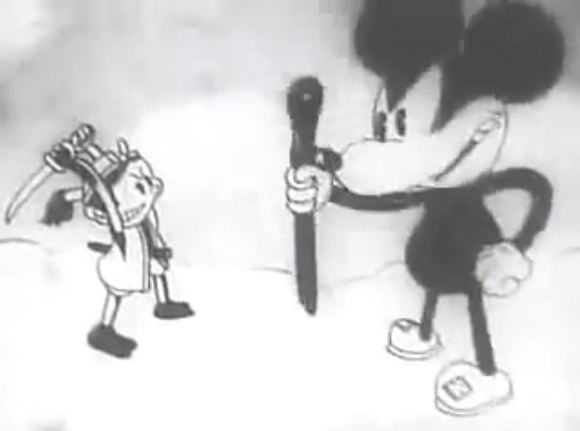
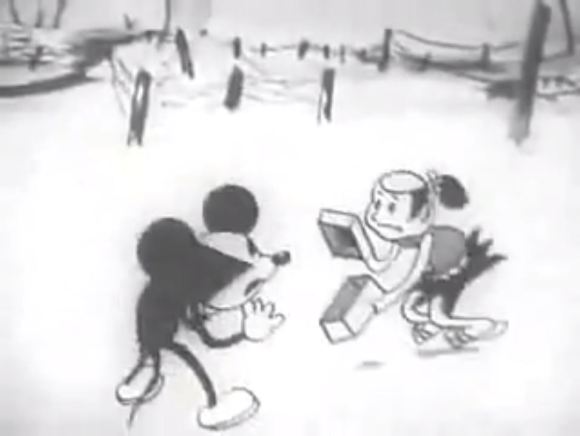
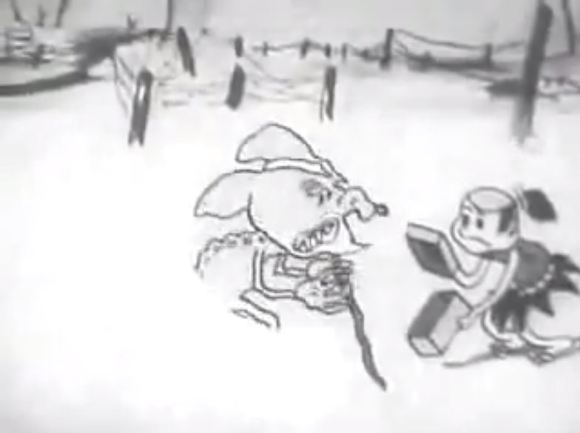

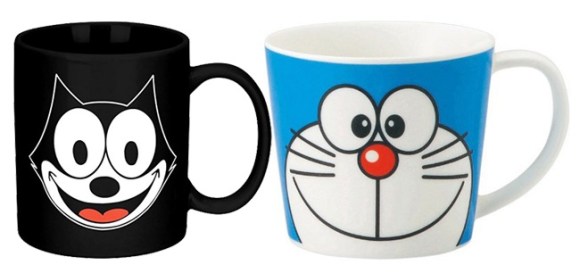 Image: Amazon
Image: Amazon 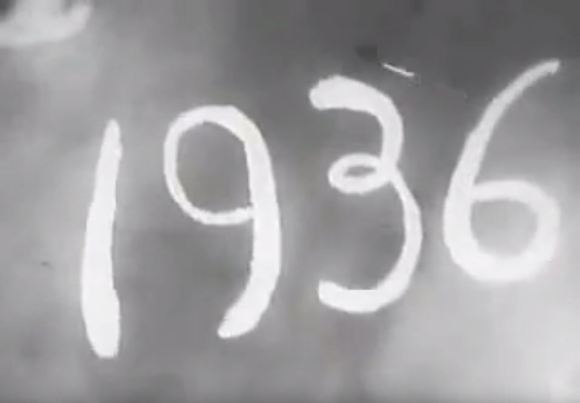
 Japan is getting a Disney Mickey Mouse Shinkansen bullet train this spring!
Japan is getting a Disney Mickey Mouse Shinkansen bullet train this spring! Disney’s Japanese New Year’s plushies and figures are ready to make oshogatsu cuter than ever
Disney’s Japanese New Year’s plushies and figures are ready to make oshogatsu cuter than ever Mickey Mouse gets kabuki makeover in Japanese character fashion line
Mickey Mouse gets kabuki makeover in Japanese character fashion line People all over the world wish Mickey Mouse a very happy 88th birthday!【Video】
People all over the world wish Mickey Mouse a very happy 88th birthday!【Video】 Disney’s 2022 New Year goods are too adorable not too buy them all
Disney’s 2022 New Year goods are too adorable not too buy them all McDonald’s new Happy Meals offer up cute and practical Sanrio lifestyle goods
McDonald’s new Happy Meals offer up cute and practical Sanrio lifestyle goods All-you-can-drink Starbucks and amazing views part of Tokyo’s new 170 meter-high sky lounge
All-you-can-drink Starbucks and amazing views part of Tokyo’s new 170 meter-high sky lounge Super Nintendo World expansion gets delayed for several months at Universal Studios Japan
Super Nintendo World expansion gets delayed for several months at Universal Studios Japan Studio Ghibli releases new action figures featuring Nausicaä of the Valley of the Wind characters
Studio Ghibli releases new action figures featuring Nausicaä of the Valley of the Wind characters Studio Ghibli glasses cases let anime characters keep an eye on your spectacles
Studio Ghibli glasses cases let anime characters keep an eye on your spectacles Beautiful Sailor Moon manhole cover coasters being given out for free by Tokyo tourist center
Beautiful Sailor Moon manhole cover coasters being given out for free by Tokyo tourist center McDonald’s Japan releases a pancake pie for new retro kissaten coffeeshop series
McDonald’s Japan releases a pancake pie for new retro kissaten coffeeshop series Kyoto’s 100 Demons yokai monster parade returns!
Kyoto’s 100 Demons yokai monster parade returns! Tokyo has a cafe lounge that’s for negative people only
Tokyo has a cafe lounge that’s for negative people only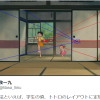 Manga artist raises question online about false perspective in Ghibli film My Neighbor Totoro
Manga artist raises question online about false perspective in Ghibli film My Neighbor Totoro Disney princesses get official manga makeovers for Manga Princess Cafe opening in Tokyo
Disney princesses get official manga makeovers for Manga Princess Cafe opening in Tokyo More foreign tourists than ever before in history visited Japan last month
More foreign tourists than ever before in history visited Japan last month Starbucks reopens at Shibuya Scramble Crossing with new look and design concept
Starbucks reopens at Shibuya Scramble Crossing with new look and design concept Beautiful new Final Fantasy T-shirt collection on the way from Uniqlo【Photos】
Beautiful new Final Fantasy T-shirt collection on the way from Uniqlo【Photos】 Is the new Shinkansen Train Desk ticket worth it?
Is the new Shinkansen Train Desk ticket worth it? Foreign English teachers in Japan pick their favorite Japanese-language phrases【Survey】
Foreign English teachers in Japan pick their favorite Japanese-language phrases【Survey】 Japanese convenience store packs a whole bento into an onigiri rice ball
Japanese convenience store packs a whole bento into an onigiri rice ball We try out “Chan Ramen”, an underground type of ramen popular in the ramen community
We try out “Chan Ramen”, an underground type of ramen popular in the ramen community Studio Ghibli releases Kiki’s Delivery Service chocolate cake pouches in Japan
Studio Ghibli releases Kiki’s Delivery Service chocolate cake pouches in Japan Japan’s bone-breaking and record-breaking roller coaster is permanently shutting down
Japan’s bone-breaking and record-breaking roller coaster is permanently shutting down New definition of “Japanese whiskey” goes into effect to prevent fakes from fooling overseas buyers
New definition of “Japanese whiskey” goes into effect to prevent fakes from fooling overseas buyers Our Japanese reporter visits Costco in the U.S., finds super American and very Japanese things
Our Japanese reporter visits Costco in the U.S., finds super American and very Japanese things Studio Ghibli unveils Mother’s Day gift set that captures the love in My Neighbour Totoro
Studio Ghibli unveils Mother’s Day gift set that captures the love in My Neighbour Totoro Foreign passenger shoves conductor on one of the last full runs for Japan’s Thunderbird train
Foreign passenger shoves conductor on one of the last full runs for Japan’s Thunderbird train Domino’s Japan now sells…pizza ears?
Domino’s Japan now sells…pizza ears? New Japanese KitKat flavour stars Sanrio characters, including Hello Kitty
New Japanese KitKat flavour stars Sanrio characters, including Hello Kitty Kyoto creates new for-tourist buses to address overtourism with higher prices, faster rides
Kyoto creates new for-tourist buses to address overtourism with higher prices, faster rides Sales of Japan’s most convenient train ticket/shopping payment cards suspended indefinitely
Sales of Japan’s most convenient train ticket/shopping payment cards suspended indefinitely Sold-out Studio Ghibli desktop humidifiers are back so Totoro can help you through the dry season
Sold-out Studio Ghibli desktop humidifiers are back so Totoro can help you through the dry season Japanese government to make first change to romanization spelling rules since the 1950s
Japanese government to make first change to romanization spelling rules since the 1950s Ghibli founders Toshio Suzuki and Hayao Miyazaki contribute to Japanese whisky Totoro label design
Ghibli founders Toshio Suzuki and Hayao Miyazaki contribute to Japanese whisky Totoro label design Doraemon found buried at sea as scene from 1993 anime becomes real life【Photos】
Doraemon found buried at sea as scene from 1993 anime becomes real life【Photos】 Tokyo’s most famous Starbucks is closed
Tokyo’s most famous Starbucks is closed One Piece characters’ nationalities revealed, but fans have mixed opinions
One Piece characters’ nationalities revealed, but fans have mixed opinions We asked a Uniqlo employee what four things we should buy and their suggestions didn’t disappoint
We asked a Uniqlo employee what four things we should buy and their suggestions didn’t disappoint Princesses, fruits, and blacksmiths: Study reveals the 30 most unusual family names in Japan
Princesses, fruits, and blacksmiths: Study reveals the 30 most unusual family names in Japan Japan weirded out by new range of Disney shower heads
Japan weirded out by new range of Disney shower heads Disney characters dress up as Bearbricks for Halloween, results range from cute to disturbing
Disney characters dress up as Bearbricks for Halloween, results range from cute to disturbing Mickey Mouse kisses a Japanese fan for so long she falls backwards【Video】
Mickey Mouse kisses a Japanese fan for so long she falls backwards【Video】 Disney releases new line of summer kimono, complete with stylish Mickey and Frozen motifs
Disney releases new line of summer kimono, complete with stylish Mickey and Frozen motifs New Year’s range of Disney sweets feature characters drawn in traditional Japanese sumi-e ink art
New Year’s range of Disney sweets feature characters drawn in traditional Japanese sumi-e ink art Too-cute-to-eat Mickey and Minnie Japanese confections melt our heart!
Too-cute-to-eat Mickey and Minnie Japanese confections melt our heart! Chinese businessman sets his sights on driving Disney Resort out of Shanghai
Chinese businessman sets his sights on driving Disney Resort out of Shanghai Keep clean with awesome Mickey-shaped soap foam at Tokyo Disney Resort’s new Hand Washing Areas!
Keep clean with awesome Mickey-shaped soap foam at Tokyo Disney Resort’s new Hand Washing Areas! Things get heated when Minnie sprays Daisy’s beau at DisneySea【Video】
Things get heated when Minnie sprays Daisy’s beau at DisneySea【Video】 Tokyo Disney’s pitch-black Halloween snacks look even weirder in real life
Tokyo Disney’s pitch-black Halloween snacks look even weirder in real life Twitter user in Japan makes amazing, tiny nail art with nail clippers and a utility knife【Pics】
Twitter user in Japan makes amazing, tiny nail art with nail clippers and a utility knife【Pics】 Ginza Cozy Corner’s Disney lucky bag fukubukuro leaves us with a bad taste in the mouth
Ginza Cozy Corner’s Disney lucky bag fukubukuro leaves us with a bad taste in the mouth Twitter users check possibility of entering Universal Studios Japan dressed as Disney characters
Twitter users check possibility of entering Universal Studios Japan dressed as Disney characters Year of the Dragon Pooh! Disney Japan’s plushies gets early Chinese zodiac changeover【Pics】
Year of the Dragon Pooh! Disney Japan’s plushies gets early Chinese zodiac changeover【Pics】 Disney meets classic Japan — see your favorite characters reborn as traditional Japanese crafts!
Disney meets classic Japan — see your favorite characters reborn as traditional Japanese crafts!
Leave a Reply